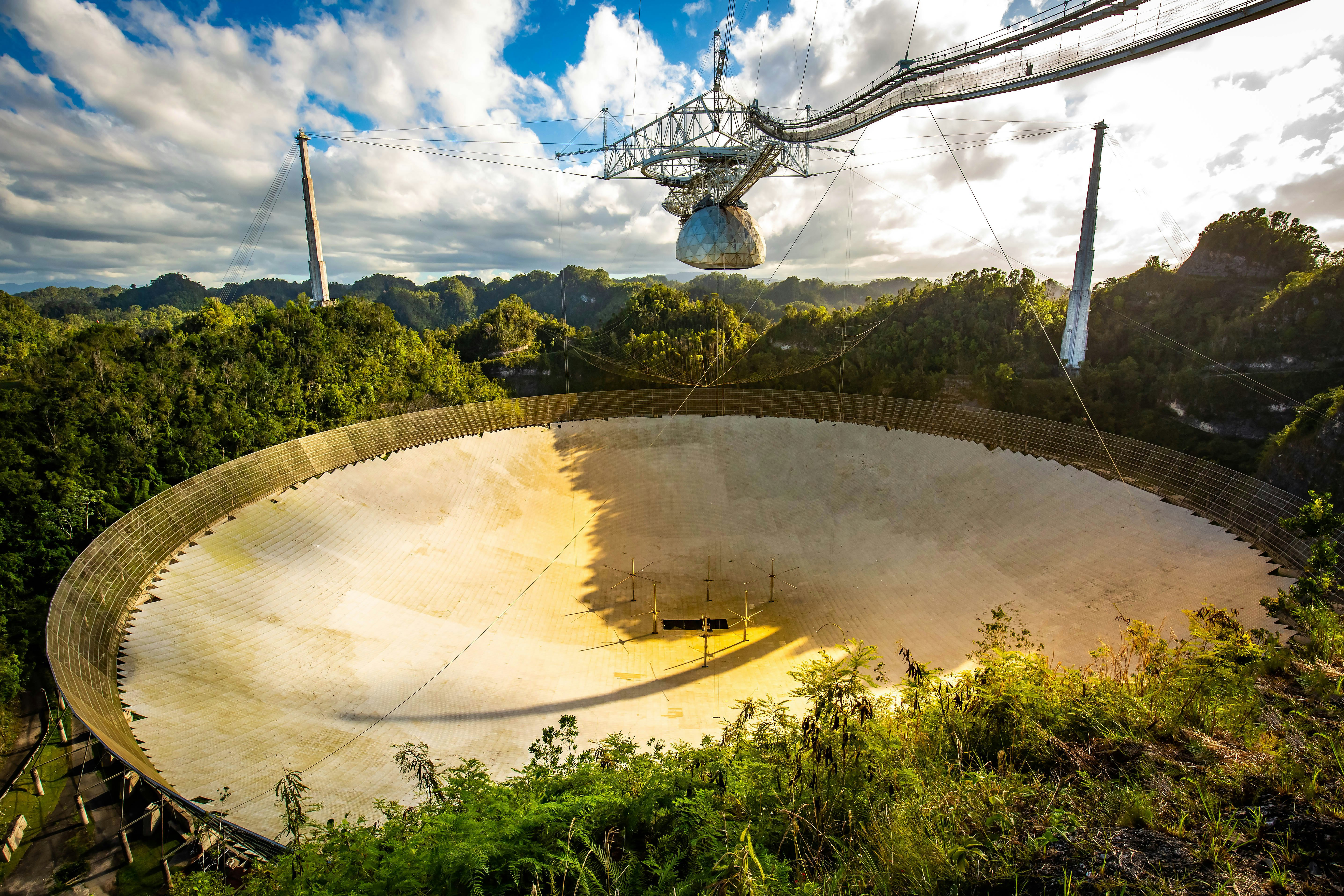
With this transition from military to civilian hands came a name change to the National Astronomy and Ionospheric Center (NAIC). Ownership of Arecibo passed from the Department of Defense to the National Science Foundation (NSF) in October 1969, and it was managed by Cornell University for more than four decades. Arecibo Observatory shifts focus to science This record was finally surpassed in July 2016, when China’s Five-Hundred-Meter Aperture Spherical Telescope (FAST) entered service. When Arecibo opened its doors in November 1963 as the Arecibo Ionospheric Observatory, having cost an estimated $9.3 million to build, the reflector’s 20-acre size made it the world’s largest radio telescope, a title it held for more than a half-century. These were connected by groups of 3-inch-thick (8 centimeter) suspension cables to a trio of large towers, affording the reflector a virtually unimpeded view of the sky. The solution for Arecibo was thus to hoist its receiving antennas, secondary and tertiary receivers, and electronics astride a pair of great metallic trusses, one doughnut-shaped, the other bow-shaped. Rather than a tower, however, designers ultimately settled on a suspended feed to both limit functional difficulties and save millions of dollars in costs. Early plans envisaged a fixed parabolic reflector (shaped like an inverted spherical dome), overhung by a tower housing the antenna ‘feed’ at the central focus of the huge dish below. In 1958, Cornell University proposed an ambitious radio observatory to ARPA, framing it as a dual-use facility for radio astronomy and ionospheric physics.

As a bonus, such radar data could be used to improve our understanding of the ionosphere, a highly ionized atmospheric layer that extends from about 30 miles (50 km) to 600 miles (960 km) above Earth. But they soon discovered that high-velocity warheads ionize regions of the atmosphere that reflect radio waves, so sensitive radar detectors can adequately track them. The Advanced Research Projects Agency (ARPA) recognized that radar decoys would make it difficult to spot long-range weapons, much less repel them. As both superpowers built arsenals of city-flattening ballistic missiles, the Department of Defense sought new ways to intercept incoming Soviet warheads should they near American shores. In the 1950s, tensions between the United States and the Soviet Union chilled into the Cold War.
#Arecibo telescope Patch
Twelve miles (19 km) to the north of the facility lies the city of Arecibo, whose 88,000 residents call this four-century-old colonial patch of Puerto Rico home.īut Arecibo’s legacy in radio and radar astronomy and atmospheric physics, as well as its searches for extraterrestrial intelligence and harmful near-Earth objects, had darker origins. The site also features a suite of sky-scouring radar and lidar hardware, which remain operational today.

National Register of Historic Places in 2008. The facility has also won awards in mechanical, computer, and electrical engineering.

Arecibo owes its name not just to the jaw-droppingly spectacular telescope that found silver-screen fame in both GoldenEye and Jodie Foster’s Contact.


 0 kommentar(er)
0 kommentar(er)
